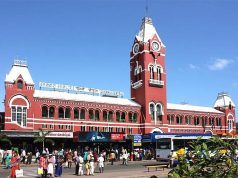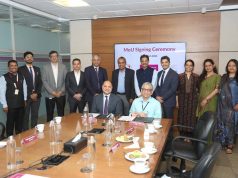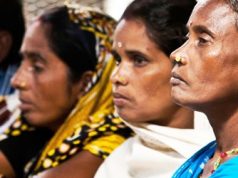Home
CATEGORIES
Health & Sanitation How Blood Stem Cell Registry Can Help Save Blood Cancer Patient’s Life
How Blood Stem Cell Registry Can Help Save Blood Cancer Patient’s Life
Every year over 1 lakh Indians are diagnosed with blood cancer and about 10,000 children are born with diseases like Thalassemia. For patients diagnosed with blood cancer and other blood related life-threatening disorders, a blood stem cell transplant may be their best or only chance of survival.
Blood cells in your body originate in the bone marrow from a blood-forming cell called a blood stem cell (hematopoietic stem cell). In a stem cell transplant a donor’s healthy blood stem cells are taken and put into a patient with blood cancer or a blood disorder, where they begin to grow and make healthy blood cells. A successful blood stem cell transplant needs a perfect HLA (Human Leucocyte Antigen) tissue match between the donor and the patient. HLA are proteins (or markers) found on most cells in your body which are used to recognize which cells belong in your body and which do not. As there are millions of different combinations, finding a suitable match is difficult.
Doctors look to find donors whose HLA closely match to the patient. Ancestry and ethnicity play an important role as you’re most likely to match someone of the same ethnic background. This is because the HLA markers used in matching are inherited. Patients and donors of Indian origin have unique HLA characteristics which is severely under-represented in the global database, making the probability of finding a suitable donor difficult. This is where the role of stem cell registries comes into play.
A stem cell registry is a database of diverse potential blood stem cell donors, whose HLA is analysed in a state-of-the-art laboratory and stored in an anonymized form for global search. When a patient needs a donor, the matching donor is identified from the database. The registry facilitates the entire process of the donor’s journey from being matched, to being counseled, medically examined, donation procedure to following up after the donation process. But here’s the catch – finding the right match is often a one-in-a-million chance! Stem cell registry connects a voluntary blood stem cell donor to a patient in need of a transplant, thereby giving many patients a second chance at life!
Key areas of function of a stem cell registry
– Raising awareness and educating the general public about the importance of blood stem cell donation
– Recruiting donors by encouraging people of diverse ethnicities to register as a potential blood stem cell donor. Recruitment is done through various registration drives at different colleges, corporates, and associations and through online portal.
– Matching and collection of stem cells
– Facilitating search requests in collaboration with transplant centres, collection, processing and transport of stem cell product
– Ensuring donor safety and following up post the procedure to monitor the well-being of the donors
– Supporting patients and families with information and organization of registration events
– Research to advance blood cancer treatment and improve the success rate of transplants
How to become a blood stem cell donor?
– To be eligible to register as a potential blood stem cell donor, you should be a healthy individual between 18 to 50 years of age and living in India.
– To register, visit the online registration portal of a stem cell registry, fill up a form and you will receive a swab kit at home.
– Fill out the consent form; take the tissue sample from the inside of your cheeks with the 3 swabs provided in the kit. Send back the swabs in the pre-paid envelope.
– Once the swabs are received, your HLA tissue gets analyzed in the lab and your details are added into the global donor database. That’s it!
– Now your profile is available for any patient searching for a suitable lifesaving donor across the globe! Once you come up as a match, the registry will get in touch with you and begin the donation procedure, which is similar to a blood platelet donation.
– It’s a completely safe and a non-surgical outpatient procedure and you might end up saving someone’s life!
 Patrick Paul is CEO at DKMS BMST Foundation India. He is associated with DKMS for over 10 years. After getting a rich experience while working in Germany, he moved to India in 2017 and worked hard in setting up of DKMS-BMST which was officially launched in 2019. Since then he is heading the team as Chief Executive Officer. Patrick envisions DKMS-BMST to achieve great milestones in coming years by helping more Indian patients suffering from Blood cancer or other Blood disorders with a second chance at life.
Patrick Paul is CEO at DKMS BMST Foundation India. He is associated with DKMS for over 10 years. After getting a rich experience while working in Germany, he moved to India in 2017 and worked hard in setting up of DKMS-BMST which was officially launched in 2019. Since then he is heading the team as Chief Executive Officer. Patrick envisions DKMS-BMST to achieve great milestones in coming years by helping more Indian patients suffering from Blood cancer or other Blood disorders with a second chance at life.
Views of the author are personal and do not necessarily represent the website’s views.
Thank you for reading the column. Please drop a line and help us do better.












